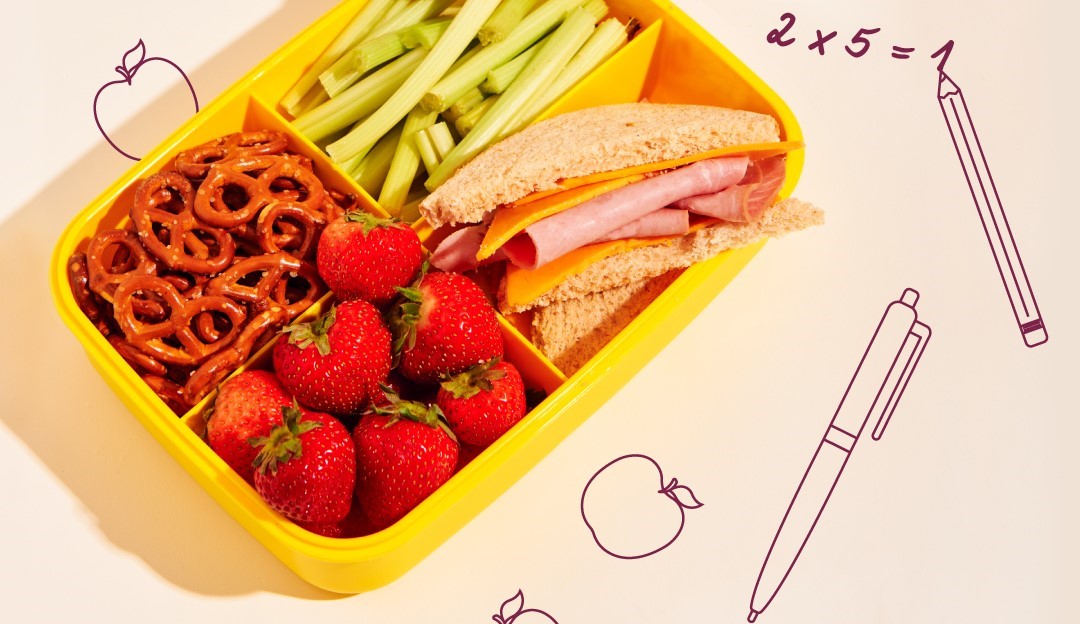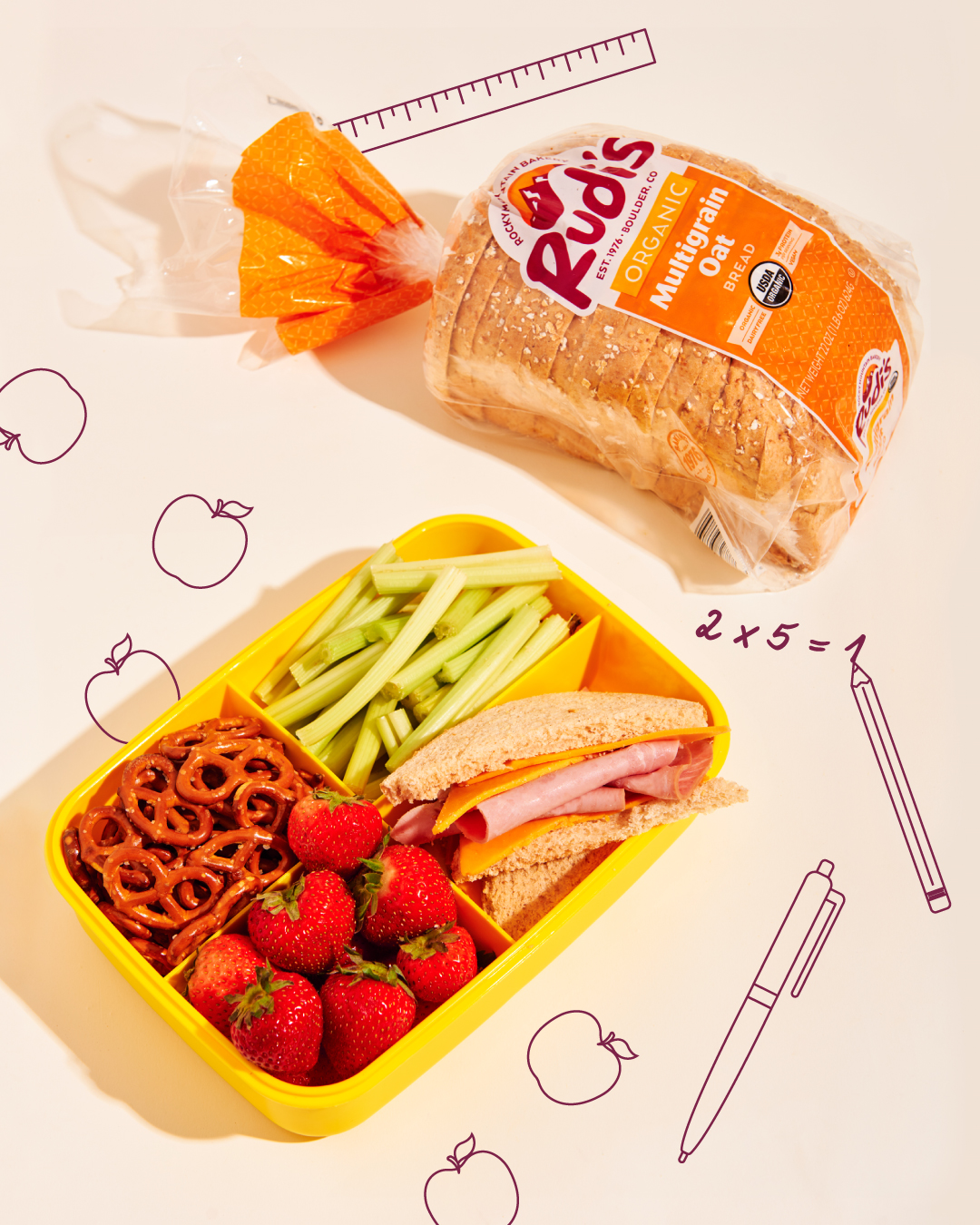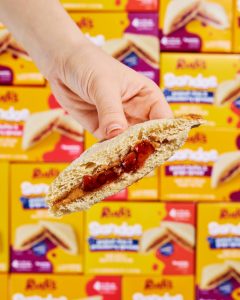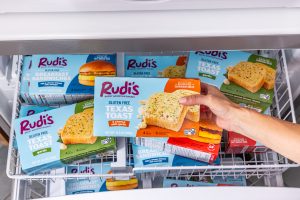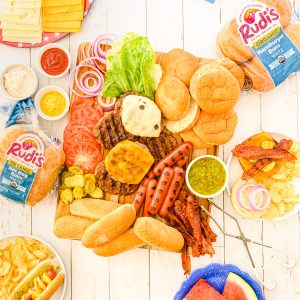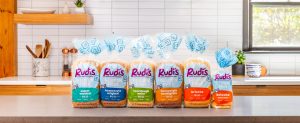It is one of the biggest parenting milestones when you realize your kids can make their own meals and snacks. Many parents have let out much-awaited sighs of relief as they watch their kid fill their own water cup … pour themselves a bowl of cereal … or spread peanut butter on their own toast.
And when kids start to pack their own lunches … let’s just say, the sun shines a little brighter that day. As a mom of three and a registered dietitian, I rejoiced the day my own kids asked to start packing their lunches. Those extra 5 minutes of hands-off time felt like 30 extra minutes and certainly helped me get back into a healthy morning routine.
The key to a kid – even as young as 4 years – being able to pack their own lunch box is to have plenty of options at their fingertips. Stocking some pre-prepped foods (such as sliced veggies) and convenience items (like freezer pb&js, fruit pouches, or string cheese) in places your kid can access gives them the confidence they need to pack their own healthy lunches.
Here are 10 items I like to keep on hand for my kids to tuck into their lunchboxes. Having nourishing options like these helps cut out unwanted sugar and provide the nutrition our kids need for their growing bodies and minds.
10 Healthy Packable Kids Cold Lunch Ideas
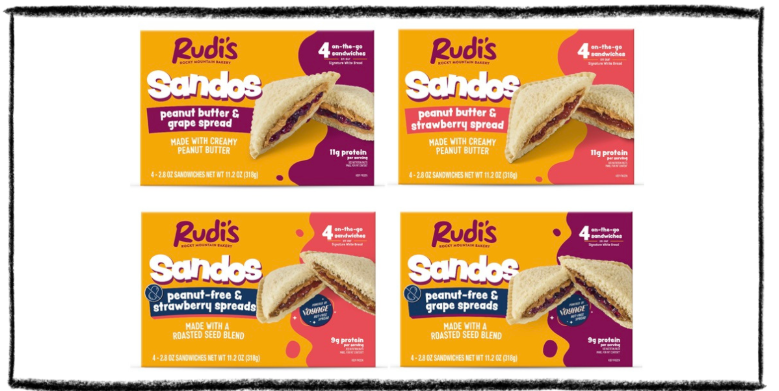
RUDI’S SANDOS
Dietitian Approved: Each of these premade sandwiches provides well-rounded nutrition, including 9-11 grams of protein, 3 grams of fiber, and monounsaturated fats
Where to Store It: Store these sandwiches in the freezer and add one directly to a lunch box when still chilled, where it will be perfectly thawed by lunch time
These portable pb&js have saved me on many a lunch-packing morning. And since they come individually packaged right out of the freezer, they’re so simple for kids to add to lunchboxes themselves. I love that Sandos have less sugar and are 40% bigger than the leading brand. They’re made with better bread and better spread, and two flavors contain a peanut-free roasted seed butter that’s safe for peanut-free schools. Rudi’s also sells a variety of organic or gluten-free breads, tortillas, bagels, and buns that are great for making easy lunch recipes with healthy carb sources, like chicken wraps, rotisserie chicken and pesto pinwheels, and deli sandwiches.

DRY ROASTED EDAMAME BEANS
Dietitian Approved: A fun way to get kids to eat more fiber- and protein-rich legumes!
Where to Store It: Keep these freeze-dried edamame bean packs in the pantry
My kids happily pack and munch on these individual packs of high protein roasted edamame beans in their lunches and school snacks. They’re crispy, flavorful, and slightly salty. I love that a serving provides 11 grams of plant-based protein plus 4 grams of fiber and zero added sugars. Pair these with other finger foods, such as pita breads, feta cheese cubes, diced and roasted sweet potato, or grilled chicken to make a charcuterie-style school lunch.
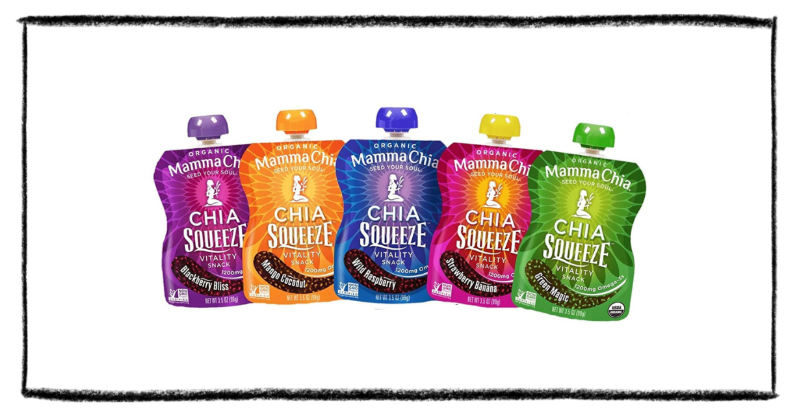
CHIA SEED FRUIT SNACKS
Dietitian Approved: It’s like a fruit puree with an extra boost of important fats kids need.
Where to Store It: These individual pouches are shelf stable and should be stored in the pantry at room temperature.
Made with organic fruit puree that’s loaded with nutritious chia seeds, these snack pouches are something my kids easily grab from the pantry to add to their lunch boxes. Each one serves up an impressive 1,200 milligrams of omega-3s, which kids need to boost their growing brains. I also love that these pouches have minimal added sugar from all-fruit sources and come in several kid-friendly flavors like blackberry, strawberry-banana, and wild raspberry. Other easy-pack pouches include applesauce and other fruit purees and Greek yogurt-based smoothies.
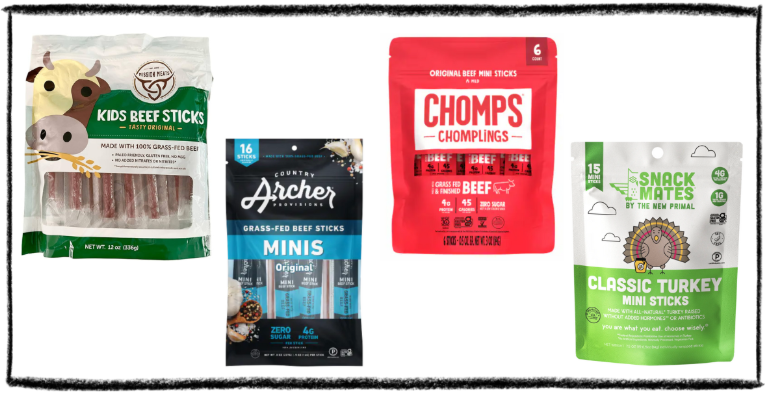
KID-SIZE MEAT STICKS
Dietitian Approved: Meat sticks are a simple everyday way to increase the satisfaction in a lunch since they’re a source of high-quality protein
Where to Store It: Individual vacuum-sealed meat sticks can be stored in the pantry
Kid-size meat sticks provide 4-7 grams of protein, depending on the brand. And, when you seek out ones made from grass-fed beef or all-natural turkey or chicken with no added sugars, you can know that your kids are getting a solid supply of an important macronutrient they need for their growing bodies and brains. Packs of individually-wrapped meat sticks are easy to find at bulk stores, such as Costco. Pair one of these with a mozzarella cheese stick and some crackers or tortilla chips for an easy meal kids can put together.
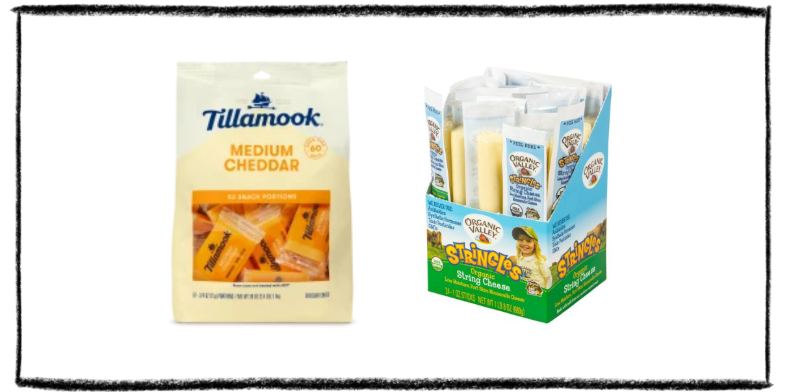
STRING CHEESE OR CHEESE SNACKS
Dietitian Approved: Cheese snacks are a wonderful choice for kids to get more daily calcium, plus protein and vitamins, in their packed lunches
Where to Store It: Store individually wrapped string cheese or cheese snacks in the refrigerator
When my kids add a string cheese or square cheese snack to their lunches, I know they are getting a flavorful snack and also adding another food group. More food groups means more variety of nutrients, and cheese is a great source of minerals (mostly calcium) as well as B vitamins, zinc, and protein.

KID-SIZE APPLES
Dietitian Approved: I often find the key to my getting kids excited about eating whole foods is to make their servings smaller, not bigger
Where to Store It: Find small RockIt apples sold at major retailers and grocers in 3-lb cartons, 2-lb bags, and 4 packs. They can be stored at room temperature or refrigerated for longer storage
I love to stock these kid-size Rockit apples because they fit great into lunch boxes and there’s less apple waste since kids usually eat the entire apple (which isn’t always true of a medium or large apple). These apples fit perfectly in kids hands and, since it’s a whole food, kids are getting the wonderful benefits of several different types of fiber, as well as vitamins and antioxidants.
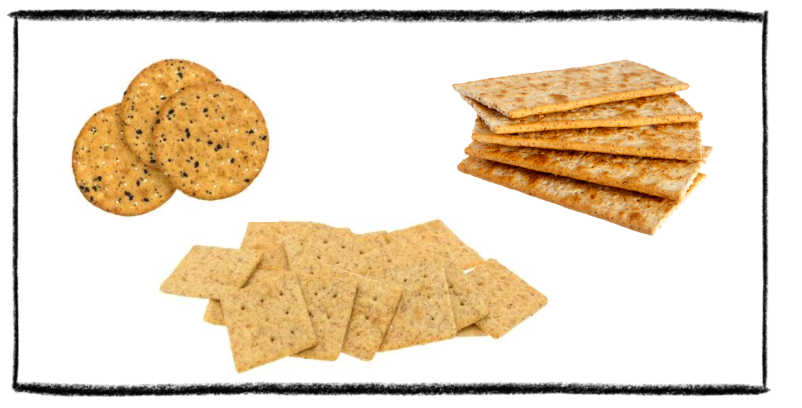
WHOLE GRAIN CRACKERS
Dietitian Approved: Whole-grain crackers provide all the nutritional benefits of a whole grain in a format that kids love to eat
Where to Store It: Keep these stashed in the pantry
When kids add a few whole grain crackers to their lunch boxes they’re getting important energy-supplying carbohydrates plus fiber, minerals, and antioxidants. Look for interesting varieties made from whole wheat, buckwheat, quinoa, brown rice, millet, or several grains together, or even in gluten-free whole grain options, if needed. Kids can also use crackers as a base to eat other nutritious lunch box combos, like meats, cheeses, hummus, salad recipes, and nut or seed butters.
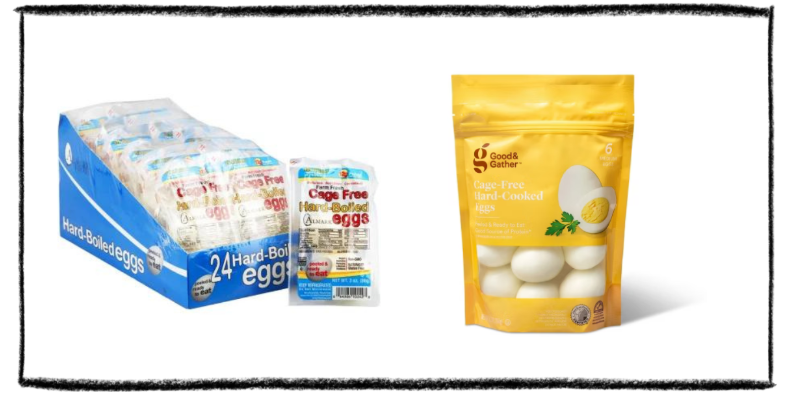
HARD-BOILED EGGS
Dietitian Approved: A hard-boiled egg provides important protein, B vitamins, choline, iron, and calcium
Where to Store It: Store cooked and peeled eggs in the fridge, or buy 2-packs of pre-cooked and peeled eggs for easy grab-and-go
At school and beyond, kids get exposed to a lot of screens, but two unique nutrients in eggs (lutein and zeaxanthin) can help protect their eyes from harmful blue light emissions. Not only that, but eggs are a great protein and vitamin complement to any lunch. I find that my kids love to eat hard boiled eggs when they have a seasoning mix to dip each bite. To make one, mix together sesame seeds, chia seeds, salt, and pepper. As another meal prep idea, kids can also pack pre-made egg salad to enjoy in lettuce wraps or with crackers.
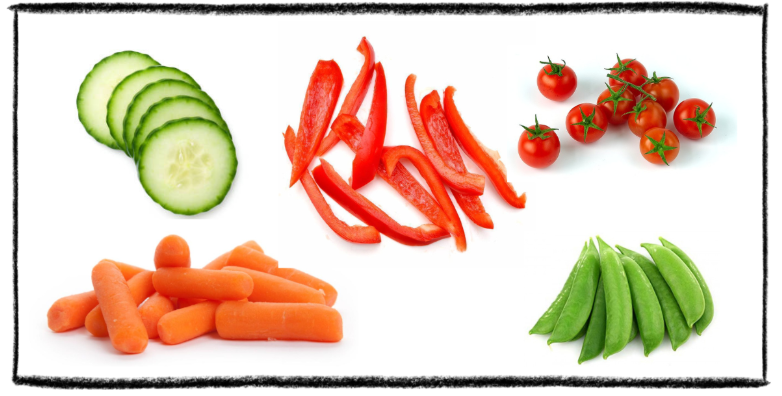
PREPPED VEGGIES
Dietitian Approved: When kids know that veggies need to be in every lunch because of their stellar nutritional profile, then all you need to do is provide some choices
Where to Store It: Keep already-sliced-and-ready veggies in containers in the refrigerator
Baby carrots, sugar snap peas, bell pepper slices, cherry tomatoes, sliced cucumbers, and celery sticks are a few kid-friendly packable veggies my kids like. But only you will know the specific veggies that your kid likes to eat. The key is to have them prepped and ready to go so kids only need to arrange them in their lunch boxes. Try to keep a variety of veggie options on hand so they’ll get something from this important food group represented in every lunch.

REAL FRUIT SNACKS
Dietitian Approved: Dried fruit snacks and gummies that are made from real fruit don’t need to be a source of added sugars, and are ideally another great fruit option
Where to Store It: Keep individual packets of better fruit snack options in the pantry
Some fruit snacks are just straight sugar hidden in cute gummy fruit shapes. But there are many better fruit snack options made only from fruit, instead of syrups, concentrates, and sweeteners. Instead of added sugars, they benefit from fruits’ natural sweetness. Single-ingredient dried fruit leather, shapes, and balls are all better options for kids. They help cut out added sugar while still providing the fiber and vitamin benefits of whole fruit.
More Healthy Bento Box Meal Prep
Give kids even more options by preparing these meal prep cold lunch ideas ahead of time. When it comes time to pack lunches, they can easily scoop a portion into a container with a tight-fitting lid and pack it away for their healthy lunchbox.
- kid friendly orzo and parmesan pasta salad
- chicken salad with grapes and red onion (no nuts)
- mediterranean chickpea salad
- easy egg salad with red pepper
- Mexican tuna salad with black beans
- quinoa salad with tahini dressing
- corn and chicken foldable tacos
- Italian caprese roll-ups with cream cheese
- couscous salad with balsamic vinaigrette
THE BOTTOM LINE
When kids have some control of what’s in their lunch boxes and how it’s arranged, they’re even more likely to happily eat it all when the lunch period rolls around. So when the glorious day comes that your kids start to pack their own cold packed lunches, it’s key to have nutritional options within their reach.
Make sure kids know which lunch foods are available to them and where they are stocked in your cupboards, refrigerator, and freezer. Use these dietitian-picked choices as ideas for nutritious foods and recipes to keep on hand for easy packing in a lunch box.
Written by Jessie Shafer.
Jessie is a Registered Dietitian Nutritionist living in Colorado where she splits her time among nearby playgrounds, typing away at her trusty laptop, and heating up her home kitchen with delicious experiments. A former magazine editor-in-chief, Jessie has a long career in food publishing and health writing. She is currently the editor at The Real Food Dietitians and a nutrition consultant through her business crdible.

